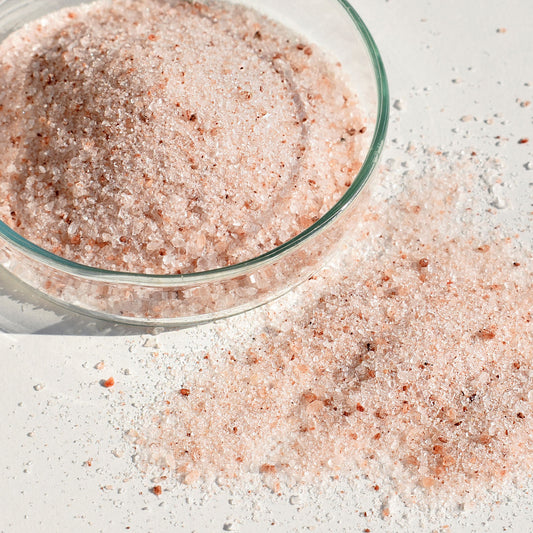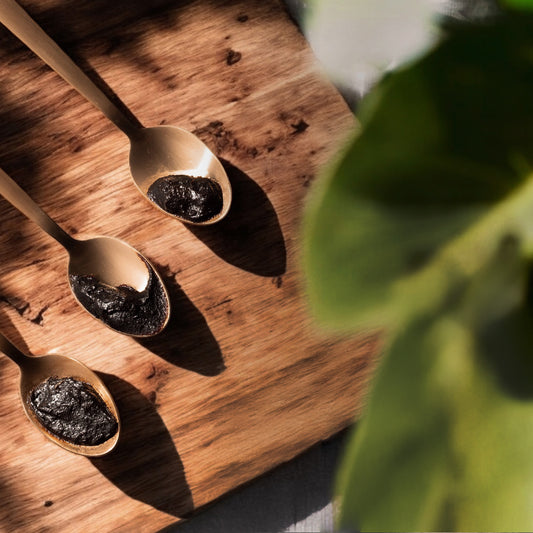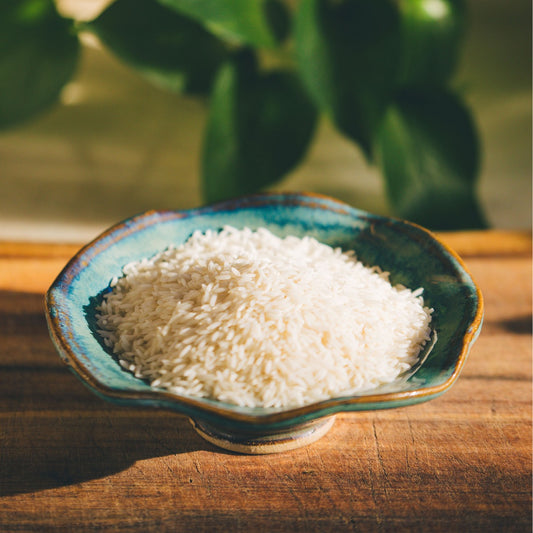When the summer season arrives and temperatures creep up, it can be hard to get excited about spending time in the kitchen cooking a nutritious meal. Besides the lure of spending time outdoors, Ayurveda explains this food apathy in a couple of ways.
First, the increase in pitta dosha leaves us feeling dehydrated, as the heat of the fire element dries us up and water escapes our bodies in an attempt to cool us down. Second, because so much energy is being expended on maintaining a semi-comfortable body temperature, our digestive fire, or agni, starts to wane as well.
Agni is at its lowest levels during the summer, which is why we often crave lighter meals and cool, hydrating foods.
It's important to respect the limitations of our agni as the seasons of the year and our lives shift. However, we still need to eat—even in pitta season—especially as we lose vital electrolytes and other minerals through sweat.
Ayurveda therefore turns to the wide world of spices, herbs, and other foods that are naturally cooling when they hit the digestive system, but also have the ability to stoke agni. That's right—not all spices are hot once they get to your gut!
Once you learn to identify the heating versus cooling effect of foods, called virya, your kitchen might become more appealing than you thought, even during the summer. As a friend of mine likes to say, cooling foods can be a form of natural air conditioning.
The Cooling Benefits of Coconut
Coconut is one of those foods with a cooling virya—hence its abundance in tropical locales and at beachside drink stands. But coconut can also be heavy and taxing on the digestive system, which makes the form of coconut important to consider.
This twist on a classic Thai dish, coconut rice, delivers the cooling power of this superfood but in a lighter form, by using coconut water instead of milk. It also uses basmati rice instead of jasmine, alongside a number of pitta-friendly additions to make the meal complete.
Rice in general, but especially basmati rice, is a great food to choose in the summer or whenever agni is low. Very easy to digest, it maintains its long strands and fluffs up beautifully when cooked (though it doesn't clump like jasmine rice, if you're looking to eat this with chopsticks!).
Basmati also absorbs the flavors of whatever you're cooking with it, so pairing it with sweet, bitter, and astringent tastes—those which balance pitta dosha, and those in the recipe that follows—can make it the ultimate pitta-pacifying base for a meal.
Two Ways to Serve—Sweet or Savory
Below are two ways to prepare your coconut rice, one sweet and one savory.
By stewing the pears for the sweet version alongside pitta-balancing foods like dates, cinnamon, and cloves in a bath of mint tea, this fibrous fruit becomes lighter than in its raw state.
Similarly, steaming the green vegetables for the savory variety allows their rainbow of colors, nutrients, and subtle flavors to shine, especially after the squeeze of lime juice. It can be helpful to consume lightly cooked foods in this way even during the summer, since cooking makes them easier for our tired agni to digest.
The burst of refreshing flavor in every bite from the fresh mint or cilantro and crunchy coconut-cashew topping may be all you need to feel calm, cool, and collected as you enjoy this quick, simple ritual of nourishment.
Serve the dishes room temperature or slightly cooled if eating a hot bowl of rice is unappealing. Both sweet and savory are great for any time of day—breakfast, lunch, or dinner. Feel free to play with adding extra mix-ins to your leftovers!

Sweet Coconut Rice Recipe
Prep time: 30 minutes
Cook time: 25–30 minutes
Serves: 2
Ingredients:
Coconut Rice
- 1 cup white basmati rice, soaked
- 1 ½ cups coconut water
- ½ cup water
- ½ teaspoon mineral salt
Note: This quantity of rice makes 3 to 4 servings, which means you will have extra to repurpose in other dishes or with another round of freshly cooked fruit or vegetables.
Coconut-Cashew Topping
- ½ cup raw cashews, chopped
- ½ cup unsweetened coconut flakes
- 1 tablespoon fennel seeds
- 1 tablespoon cardamom pods
Sweet Toppings
- 1 mint tea bag or 1 teaspoon loose mint tea
- ¾ cup boiling water
- 2 medium pears, chopped
- 4 Medjool dates, pitted and chopped
- Dash ground cinnamon
- 2 teaspoons fresh mint leaves, chopped
- 4 whole cloves or ½ teaspoon ground cloves
- 1 teaspoon crushed culinary-grade rose petals (optional)
Directions:
Cover the rice with water in a small bowl and let soak for about 30 minutes.
Prepare the coconut-cashew topping. Add the cashews, coconut flakes, fennel, and cardamom or coriander (depending on which version you are making) to a large skillet over low heat. Toast until fragrant, 3–5 minutes. Stay close, because the coconut can burn easily.
Bring the coconut water and regular water to a boil in a large saucepan. Strain the rice and rinse it 2 to 3 times until the water runs clear. Transfer to the pan with the water and add the mineral salt. Return to a boil, then reduce heat to maintain a simmer and cover.
Cook for 15–18 minutes, until the water is absorbed and the rice is tender. Turn off the heat, place a paper towel over the pan, and recover with the lid for 10 minutes (this will absorb any extra water and make the rice fluffy). Uncover, and fluff with a fork.
Prepare a cup of mint tea by adding the tea bag or leaves (in a tea ball) to a mug or small bowl with the boiling water. Let steep for 5 minutes, then discard the tea bag or leaves.
Add the pears, dates, cinnamon, cloves, and mint tea to a separate saucepan over medium heat. Cover and cook 8–10 minutes, or until the pear is very soft.
To serve, place a scoop of rice and a scoop of the stewed fruit in each bowl. Garnish with a spoon of the coconut-cashew mixture, rose petals, and mint. If there is extra liquid in the pan, pour it over the bowls to moisten. Enjoy immediately while warm.

Savory Coconut Rice Recipe
Prep time: 30 minutes
Cook time: 25–30 minutes
Serves: 2
Ingredients:
Coconut rice, prepared as above.
Coconut-cashew topping, prepared as above, substituting cardamom pods with 1 tablespoon coriander seeds.
Savory Toppings
- 2 cups baby bok choy, chopped
- 1 ½ cups celery, chopped
- 1 cup daikon radish, cut into half moons
- ¼ cup water
- ¼ cup fresh cilantro, chopped
- 2 teaspoons fresh mint leaves, chopped
- 1 lime
Directions:
After preparing the coconut rice, add the bok choy, celery, and daikon radish to a large skillet with the water over medium heat. Cover and quickly steam, 3–5 minutes, or until the vegetables are soft but still bright green.
To serve, place a scoop of rice and a scoop of the steamed vegetables in each bowl. Garnish with a spoon of the coconut-cashew mixture, cilantro, mint, and a squeeze of lime juice. Enjoy immediately while warm.











